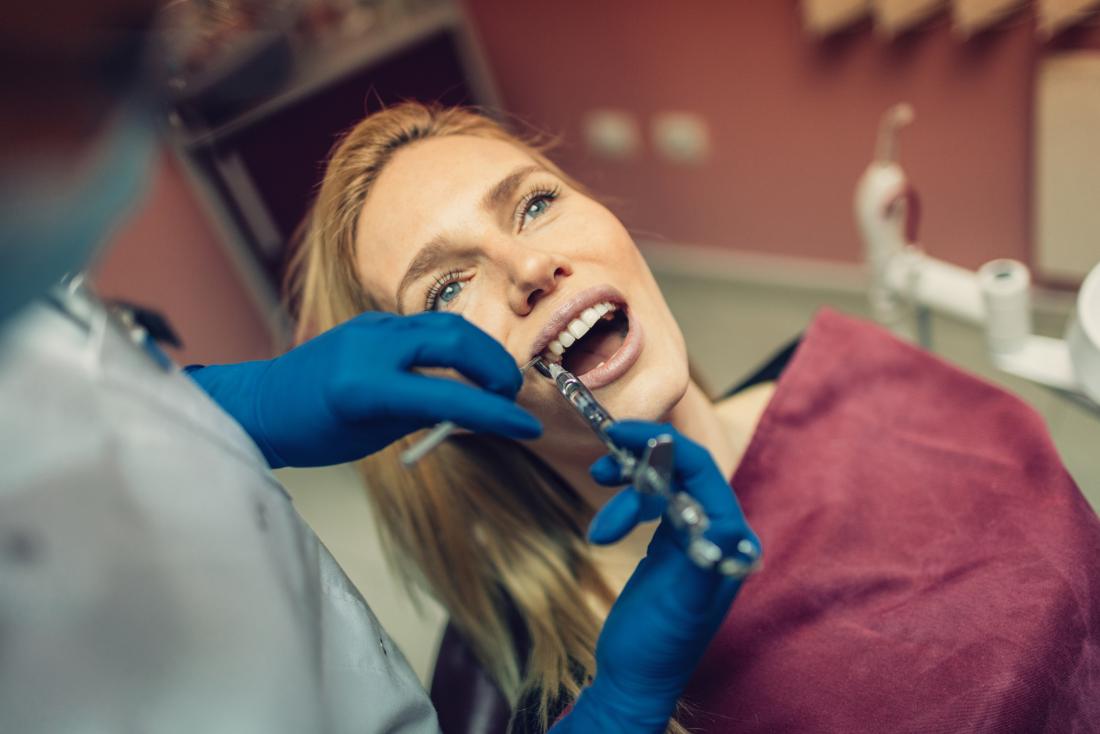Novocaine is the brand name for a local anesthetic called procaine. It is a local anesthetic medication that is used to numb a particular part of the body. It is most commonly used in dental procedures to numb the area around a tooth.
In this article, we take a closer look at Novocaine and its effects.
How long does Novocaine last?
Novocaine is one of the shortest-acting local anesthetic shots. Its effects typically last for 30 to 60 minutes. If Novocaine is given alongside epinephrine, also known as adrenaline, it may continue to work for up to 90 minutes.
The exact length of time that Novocaine works for depends on several factors, including:
1. The dose

The dose of Novocaine administered will depend on the procedure being performed.
The higher the dose of Novocaine, the longer its numbing effects will last.
The amount administered depends on:
- the type of procedure being performed
- the number of nerves being numbed
- the size of the area being treated
A root canal treatment will require more Novocaine than a simple filling, for example.
2. The individual
Anesthetic effects vary slightly from person-to-person. The presence of certain medical conditions may also affect how the body breaks Novocaine down.
Novocaine is broken down in the body by an enzyme called pseudocholinesterase.
However, approximately 1 in every 5,000 people have a pseudocholinesterase deficiency and cannot metabolize Novocaine or other anesthetics. As a result, the effects of Novocaine last much longer in people with this condition.
Other conditions can cause people to be less sensitive to local anesthetics. People with a rare disorder called Ehlers-Danlos Syndrome, for example, may require higher amounts of anesthetic to achieve numbness.
3. Presence of infection
Anesthetic is less effective when used on an infected tooth. An infection causes the tissue to become more acidic, and local anesthetic is sensitive to pH levels. Inflammation also reduces the effectiveness of local anesthetic, especially during dental procedures.
Because of this, a dentist may need to use more Novocaine on an infected tooth than they do on a healthy tooth.
4. Use of epinephrine
The use of epinephrine with Novocaine is probably the most important factor in determining the length of time an area will remain numb.
Epinephrine causes the blood vessels to get smaller. This reduces blood flow around the injection site and keeps the anesthetic confined to that area for longer than usual. Epinephrine also minimizes bleeding.
People with some medical problems, such as heart disease or high blood pressure, may require an epinephrine-free shot.
What is Novocaine used for?

Novocaine is commonly used during dental procedures.
Novocaine was developed in 1905 and became the first widely used local anesthetic in the United States. Local anesthesia does not cause a loss of consciousness before a medical procedure, unlike a general anesthetic.
People who get a local anesthetic are still awake for the procedure but cannot feel the area of the body being treated.
Novocaine and similar drugs work by stopping nerves in the body from sending pain signals to the brain.
Local anesthetics are commonly used during dental procedures, such as removing a tooth or filling a cavity.
They are also used during other minor procedures, including:
- mole or wart removal
- cataract removal
- a biopsy, which involves taking a tissue sample for examination
- pacemaker insertion
In recent years, Novocaine has been replaced by newer local anesthetics because their numbing effects last longer. Novocaine may however still be used during some procedures.
What does getting Novocaine feel like?
First, a dentist will use cotton rolls or air to dry the part of the mouth being treated. Then they will apply a numbing gel to the skin.
Next, the dentist will slowly inject Novocaine into the gum tissue around the affected tooth. Most people experience a stinging sensation at this point. This feeling is not caused by the needle, but by the anesthetic entering the tissue.
Novocaine acts quickly, causing people to lose feeling in the affected area within 5 minutes or so. People should no longer feel pain at this point, although they may be able to feel pressure or movement around the area being treated.
Once the anesthetic begins to wear off, people regain feeling in the tooth first, followed by the lips and tongue People may find it difficult to eat, drink, or speak clearly until the numbness subsides.
Risks and side effects

Headaches and drowsiness are potential side effects of Novocaine.
Novocaine is considered very safe. The most common side effects include:
- tingling and minor pain at the injection site
- dizziness
- headaches
- drowsiness
- twitching muscles
These effects are usually mild and wear off within a few hours.
More severe side effects are associated with a Novocaine allergy, but this is very rare. Allergy symptoms require immediate medical attention and include:
- difficulty breathing
- hives
- itching
- loss of consciousness
- swelling
Other very rare side effects that require emergency medical intervention include:
- chest pain
- irregular heartbeat
- nausea
- vomiting
- trembling
- seizures
It is essential that people tell their dentist about any over-the-counter or prescription medications they are taking as some medications can interact with Novocaine.
It is also important that people inform the dentist of any health conditions they may have so they can choose the best anesthetic for them, and administer it in the right dose.
How to help Novocaine wear off faster
Usually, Novocaine’s effects wear off once blood circulation increases and carries the drug away in the bloodstream. This happens relatively quickly, but some people may wish to speed up the process.
Local anesthetic may be broken down faster if the person goes for a walk or engages in activity after their treatment. Physical activity increases blood flow in the body. However, it is important to get the go-ahead from a doctor or dentist before engaging in exercise soon after a procedure.
Alternatively, a dentist can use a substance called OraVerse to reverse the effects of an anesthetic. A dentist can inject this medication after the procedure to make the numbing go away.
Research suggests that OraVerse is safe to use and does not interact with other medications. It costs extra, however, and insurance does not cover it.
Takeaway
Novocaine is a safe and effective local anesthetic. It is most commonly used in dentistry for procedures that take less than 90 minutes to perform. Several factors affect the time Novocaine lasts, including the dose and the use of epinephrine.
In recent years, newer local anesthetics have been used instead of Novocaine, including lidocaine (Xylocaine) and articaine. These drugs are also very safe to use, and their effects tend to last longer than Novocaine.
People undergoing a medical or dental procedure should discuss their questions and concerns with their doctor or dentist.
Let’s block ads! (Why?)





